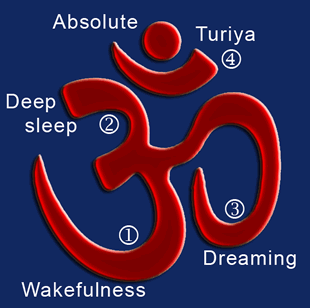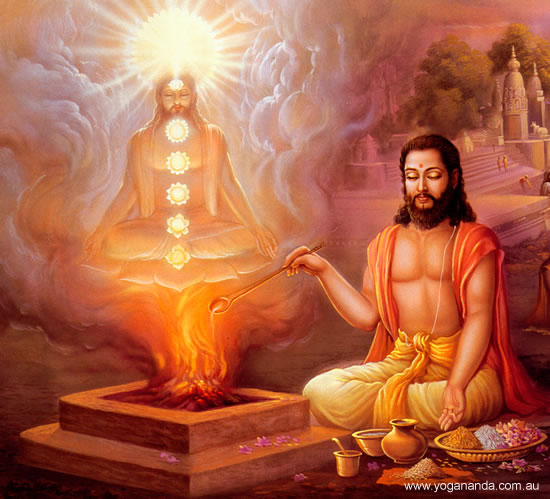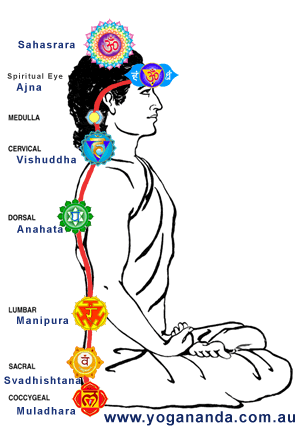Glossary of Yoga and Spiritual Terms
AUM
 Sage Patanjali, India's greatest exponent of yoga, describes God the Creator as Ishvara, the Cosmic Lord or Ruler. "His symbol is Pranava (the Holy Word or Sound, Aum). By prayerful, repeated chanting of Aum and meditation on its meaning, obstacles disappear and the consciousness turns inward (away from external sensory identification)" (Yoga Sutras I:27-29)
Sage Patanjali, India's greatest exponent of yoga, describes God the Creator as Ishvara, the Cosmic Lord or Ruler. "His symbol is Pranava (the Holy Word or Sound, Aum). By prayerful, repeated chanting of Aum and meditation on its meaning, obstacles disappear and the consciousness turns inward (away from external sensory identification)" (Yoga Sutras I:27-29)
(More...)
![]()
Yoga
The highest connotation of the word yoga in Hindu philosophy is union of the individual soul with Spirit through scientific methods of meditation.
There are various types of yoga methods:
Hatha Yoga,
Mantra Yoga,
Laya Yoga,
Karma Yoga,
Jnana Yoga,
Bhakti Yoga, and
Raja Yoga. (More...)

![]()
Raja Yoga, the "Royal Yoga"
The "royal" or highest path to God-union. It teaches scientific meditation (q.v.) as the ultimate means for realizing God, and includes the highest essentials from all other forms of Yoga. The Self-Realization Fellowship Raja Yoga teachings outline a way of life leading to perfect unfoldment in body, mind, and soul, based on the foundation of Kriya Yoga (q.v.) meditation.
Raja Yoga, the "Royal Yoga," is the science of God-realization, a step-by-step means of reuniting the soul with Spirit— man with his Creator—developed by the rishis of ancient India, with proven and uniform results. Raja Yoga was masterfully systematized by the great sage Patanjali in his Yoga Sutras. It combines the highest from all other yoga disciplines: devotion, right action, physical and mental self-control, and divine communion through scientific techniques of concentration and meditation. The fulfillment of the path, God-realization, "makes all things possible" for it teaches how to make the mortal immortal.
![]()
Raja Yoga, the "royal" or complete yoga, is that which is taught by Self-Realization Fellowship, and which Bhagavan Krishna extols to his disciple Arjuna in the Bhagavad Gita: "The yogi is greater than body-disciplining ascetics, greater even than the followers of the path of wisdom or of the path of action; be thou, O Arjuna, a yogi!" (Bhagavad Gita vi:46). The sage Patanjali, foremost exponent of Yoga, has outlined eight definite steps by which the Raja Yogi attains samadhi, or union with God. These are
 yama - moral conduct;
yama - moral conduct;
niyama - religious observances;
asana - right posture;
pranayama - control of prana, subtle life currents;
pratyahara - interiorization, withdrawal of the senses from external objects;
dharana - concentration,
dhyana - meditation; and
samadhi - superconscious experience; union with God.
![]()